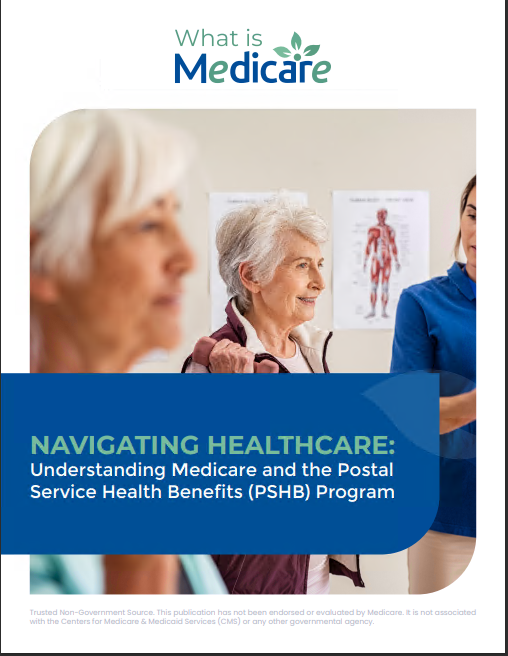Key Takeaways
-
If you take regular prescription medications, enrolling in Medicare Part D in 2025 can help you avoid high out-of-pocket drug costs.
-
Skipping Part D when you’re first eligible can lead to lifelong penalties and coverage delays, especially if you don’t have other credible drug coverage.
Understanding Medicare Part D in 2025
Medicare Part D is your prescription drug coverage. It’s not included in Original Medicare (Parts A and B), so you need to enroll separately if you want help with medication costs. In 2025, Part D becomes even more important thanks to key updates that reduce the financial burden of drug spending.
If you take regular medications for chronic conditions or anticipate needing new prescriptions in the future, overlooking Part D could be a costly mistake.
What Part D Covers in 2025
Medicare Part D helps cover a broad range of prescription drugs, including:
-
Brand-name medications
-
Generic drugs
-
Medications for chronic conditions like diabetes, high blood pressure, or asthma
-
Vaccines recommended by the CDC
Each Part D plan has its own formulary, or list of covered drugs. These lists are organized into tiers, with different costs depending on the medication’s tier. The plan’s formulary must cover at least two drugs in each therapeutic category, so you generally have options.
What Changed in 2025
Several updates in 2025 make Medicare Part D significantly more beneficial to enrollees:
-
Out-of-pocket cap: Your total out-of-pocket drug costs are now capped at $2,000 for the year. Once you reach this amount, your plan covers 100% of additional drug costs for the rest of the year.
-
Payment flexibility: If needed, you can opt to spread your out-of-pocket drug expenses across the calendar year rather than paying large amounts upfront. This new feature is called the Medicare Prescription Payment Plan.
-
No more coverage gap: The infamous “donut hole” has been eliminated, so your costs don’t spike mid-year when you reach a certain spending threshold.
These changes bring more predictability and peace of mind, particularly if you depend on high-cost prescriptions.
You Can’t Enroll Anytime You Want
Timing is everything with Medicare Part D. Here are the main windows for enrollment:
-
Initial Enrollment Period (IEP): Starts three months before you turn 65, includes your birthday month, and continues for three months after.
-
Annual Enrollment Period (AEP): Runs from October 15 to December 7 each year. This is when you can join, switch, or drop a Part D plan.
-
Special Enrollment Period (SEP): Available if you lose other credible drug coverage or experience certain life changes.
If you miss your IEP and don’t have other credible drug coverage, you may face late enrollment penalties. The penalty is permanent and added to your monthly premium as long as you have Part D.
Why You Shouldn’t Skip Part D If You Take Regular Medications
Cost Protection
Prescription drugs can be expensive, especially for chronic conditions requiring daily or long-term treatment. Even generic drugs add up over time. Without Part D, you pay full price at the pharmacy.
Part D spreads your drug costs over time, helps with affordability, and reduces financial strain. And with the 2025 $2,000 annual cap, your total liability is now more predictable and manageable.
Avoiding Gaps in Coverage
If you skip Part D initially and try to enroll later, you may have to wait until the next enrollment period. During that time, you could be left without any drug coverage, especially if you don’t qualify for a Special Enrollment Period. That could mean months of high prescription costs.
Permanent Penalties
If you go 63 or more days without credible drug coverage after becoming eligible for Medicare, you’ll incur a late enrollment penalty. This penalty is calculated based on how long you went without coverage and added to your monthly Part D premium.
It’s not a one-time fee—it sticks with you for life, as long as you’re enrolled in Part D. This makes enrolling when you’re first eligible the smart move.
Coordinating Part D With Other Medicare Options
Many people choose to combine Part D with other types of Medicare coverage:
-
Original Medicare + Part D: If you stick with Original Medicare (Parts A and B), you can enroll in a standalone Part D plan to cover your prescriptions.
-
Medicare Advantage (Part C) Plans: Many Medicare Advantage plans include prescription drug coverage (called MA-PDs). If you choose one of these, you generally don’t need to enroll in a separate Part D plan.
Always verify that your regular medications are covered by the plan you’re considering. Formularies differ, and so do costs.
Check If Your Drug Coverage Is Credible
Some people delay enrolling in Part D because they have drug coverage through an employer, union, or retiree plan. That can be okay—as long as that coverage is considered creditable by Medicare.
Creditable drug coverage means the plan pays at least as much as standard Medicare Part D coverage. Your plan should send you a notice each year confirming whether it is creditable.
If you lose this coverage, you’ll have a Special Enrollment Period to enroll in Part D without facing a late penalty—as long as you act within 63 days.
Common Misconceptions About Medicare Part D
Let’s clear up a few common misunderstandings that cause people to skip Part D:
-
“I don’t take medications now, so I don’t need it.” Even if you’re currently healthy, things can change quickly. Sudden diagnoses, injuries, or age-related conditions may require prescriptions. Delaying Part D means you’ll face higher costs and potential penalties later.
-
“I can just enroll when I need it.” Not true. You can only enroll during designated periods unless you qualify for a Special Enrollment Period. Waiting until you need coverage could leave you exposed.
-
“Part D isn’t worth it.” With the new out-of-pocket cap and payment options in 2025, Part D now provides stronger financial protection. It’s worth reviewing your options carefully.
What to Look for in a Part D Plan
When considering your Part D options, keep these factors in mind:
-
Drug coverage: Check the plan’s formulary to make sure your medications are covered.
-
Pharmacy network: Ensure your preferred pharmacy is included in the plan’s network.
-
Tier structure: Understand the cost differences between generic and brand-name drugs.
-
Monthly premium and deductible: While you can’t avoid paying something, plans vary in how they balance premiums and out-of-pocket costs.
-
Prior authorization rules: Some drugs may require your doctor to submit additional paperwork before the plan approves coverage.
Use Medicare’s Plan Finder tool or speak with a licensed agent to compare plans that fit your needs.
Timeline to Remember for 2025
Here are key dates to keep on your radar:
-
January 1: Coverage begins for those who enrolled during AEP.
-
October 15 – December 7: Annual Enrollment Period for making changes to your Part D plan.
-
December 31: Last day of your current plan year. Any changes made during AEP take effect January 1.
Staying aware of these deadlines ensures you’re not caught without coverage or facing late penalties.
Your Medication Needs Deserve the Right Coverage
In 2025, Medicare Part D offers more protection than ever. If you take regular prescriptions—or even if you don’t right now—you can’t afford to ignore this coverage. Skipping it leaves you open to unpredictable costs, permanent penalties, and potential gaps in coverage.
Choosing a plan that fits your needs can bring peace of mind and financial stability throughout the year. If you’re unsure about your options, speak with a licensed agent listed on this website for personalized help and plan comparisons.





